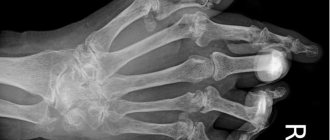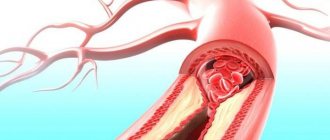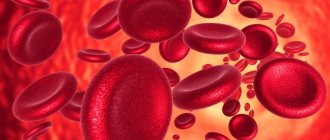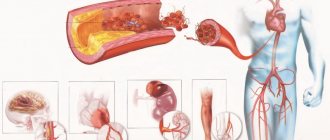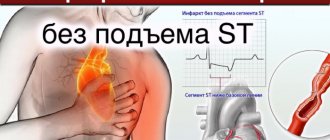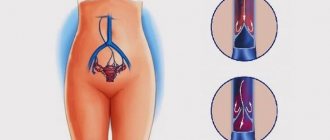Anemia is a pathological condition in which the number of formed blood cells is reduced. Aplastic anemia is a disorder when bone marrow stem cells are damaged, and therefore inhibition of hematopoiesis develops. The pathology is acquired during life or is hereditary. The incidence is small - only 3-5 people per million. Among people over 55, the risk is higher than among younger people.
Aplastic anemia: what is it?
Aplastic anemia is a hematological syndrome reflecting inhibition of erythrocyte, leukocyte and platelet lineages of the bone marrow. Isolated red blood cell deficiencies also occur. The first description of the pathology in 1888 belongs to the German immunologist, founder of chemotherapy, Paul Ehrlich. The incidence in Europe is 4-5 cases per 1,000,000 people. Young (under 20 years of age) and older age groups (after 65) typically become ill. The prevalence is higher in regions with chemical production and aggressive use of agricultural fertilizers. In young people, a viral infection plays a role, triggering immune processes in the body.
Peripheral blood stem cell transplant
Peripheral blood stem cell transplantation is increasingly being used to treat aplastic anemia, but scientific trials have not yet been completed. The transplant procedure involves removing stem cells from the donor's peripheral blood, rather than from the bone marrow. Attempts have been made to transplant stem cells from the umbilical cord. In addition, as an experiment, autologous transplantations were performed in patients in whom, in addition to altered stem cells, healthy ones were found.
In this type of transplantation, bone marrow stem cells are taken from the patient and then transplanted back into the patient. Before this, chemotherapy is first given to remove the affected bone marrow cells.
Causes of aplastic anemia
A clear dependence of the occurrence of the disease on a certain factor can be traced in no more than half of the patients . There are both congenital variants against the background of inherited or provoked chromosomal abnormalities, and acquired ones. The underlying cause is immune aggression against hematopoietic precursor cells. She is provoked by:
Inherited features of proteins responsible for DNA repair (in Fanconi anemia).- Physical and chemical agents: aromatic hydrocarbons, ionizing radiation, alkylating agents, antimetabolites (purine, folic acid antiagonists).
- Medicines: chloramphenicol (chloramphenicol), non-steroidal anti-inflammatory drugs (phenylbutazone), gold preparations (sodium aurothiomalate), insecticides.
- Hepatitis (viral, alcoholic, toxic). However, there is no direct relationship between the risk of developing aplasia and the severity of liver inflammation. Even after recovery from hepatitis, anemia may occur.
- Viruses: cytomegalovirus, Epstein-Barr, hepatitis B, C, D, E.
- Pregnancy reduces immune defenses. Even after the birth of the fetus, the risks of developing bone marrow failure remain.
- Other diseases: paroxysmal nocturnal hemoglobinuria, tuberculosis, thymoma, Hoshimoto's goiter, chronic lymphoblastic leukemia, lymphoma.
Please note:
If the cause is not clearly established, then aplastic anemia is considered idiopathic.
Symptoms
Suppression of bone marrow hematopoiesis will certainly change the situation in the periphery. A blood test will show pancytopenia (a sharp decrease in all populations of formed elements), which will undoubtedly sooner or later affect the patient’s well-being. Idiopathic aplastic anemia sometimes occurs in an acute form: the disease begins suddenly, progresses rapidly and practically does not respond to treatment. But more often it comes little by little, slowly changing the blood picture. The patient does not notice anything for a long time, since the process proceeds smoothly and adapts to the decrease in blood cells. But for the time being, because sometimes a critical moment comes that forces you to seek help.
When pancytopenia reaches a great depth, the remaining amount of formed elements, which still continues to circulate in the blood, cannot cope with the tasks of a normal community, depression of hematopoiesis begins to manifest itself with symptoms:
- Anemia, which is caused not only by impaired formation of red blood cells, but also by bleeding that occurs due to a decrease in blood platelets - platelets. Anemia is manifested by hypoxia, pale skin, headache, dizziness, shortness of breath, general weakness and malaise, inflammatory reactions of the oral mucosa;
- Thrombocytopenia with clinical signs of hemorrhagic syndrome (skin rashes, bleeding from the gums, nose, uterine cavity);
- A decrease in white blood cells - neutrophil leukocytes, which makes the body unable to resist infections. Neutropenia can be quite severe and cause various inflammatory diseases (otitis media, pneumonia, suppuration of hematomas, sepsis and other infectious complications accompanied by fever);
- Impaired cardiac activity during anemia will manifest itself as a systolic murmur, which the doctor will note during auscultation;
- Concomitant hemolysis - it occurs in some patients (hypoplastic anemia with a hemolytic component) due to the early death of red blood cells, which indicates not only quantitative abnormalities of red cells in the periphery, but also indicates their qualitative defects (the cause of hemolysis is a special syndrome of a combination of AA and paroxysmal nocturnal hemoglobinuria - PNH). Due to an increase in bilirubin in the blood, the patient’s skin becomes jaundiced;
- signs of the initial stage of AA
The change in the size of the spleen and liver is imperceptible in the first stages, but this happens somewhat later, for example, massive transfusions of red blood cells will cause hemosiderosis and splenomegaly, and circulatory failure will affect the liver (it will increase).
Acute anemia is usually an acquired variant of the disease. It should be noted that the acute super-severe form progresses quickly, it is difficult to fight it; within a few weeks, regardless of the intensive measures taken, the patient dies. Super-severe anemia often (10 times more often than in others) develops in people who were treated with chloramphenicol, known as chloramphenicol.
In congenital and hereditary forms, the disease has a predominantly chronic course. Chronic anemia continues for a long time - sometimes subsiding, sometimes worsening, leaving the patient a chance to live, since sometimes it leads to complete relief from the disease, that is, recovery.
Pathogenesis
Suppression of hematopoietic precursor cells of red blood cells, leukocytes and platelets occurs by T lymphocytes. Additionally, the death of germ cells is accelerated by interferon, tumor necrosis factor, and other cytokines. The bone marrow undergoes fatty degeneration. Quantitative deficits and functional defects of hematopoietic cells appear. A reduction in their population leads to disturbances in iron metabolism, which accumulates in the bone marrow, heart muscle, and liver, disrupting the functioning of organs. A deficiency of erythrocytes leads to anemia, platelets – to spontaneous hemorrhages or bleeding, leukocytes – facilitates the development of infectious processes.
note
Immune reactions against hematopoietic germs can trigger a variety of chemical compounds. It is important to limit the uncontrolled intake of drugs and household pesticides into the body.
Folate deficiency anemia
A general examination reveals a decreased state of the red blood cell. The diameter of this microelement will be more than 12 microns. Folate deficiency is also characterized by reticulopenia, a decrease in platelet and leukocyte counts. In addition to these manifestations, folate deficiency pathology causes lymphocytosis. ESR increases its intensity. Folate deficiency pathology is included in the megaloblastic subgroup. Due to the low percentage of folic acid, the division of mature blood cells stops, and folate deficiency develops.
The hyperchromic group of the disease is characterized by a reduced number of red blood cells. At the same time, the hemoglobin level practically does not change. Consequently, red blood cells experience an excess of this substance. Therefore, it causes the red blood cells to become intensely red. Diagnosed hypochromic is provoked by a reduced level of hemoglobin in red blood cells. Diagnosis of the disease comes in laboratory conditions. Deciphering the blood test helps determine whether the patient has it. To do this, it is necessary to determine the ratio of red blood cells, hemoglobin and color.
Author: E. Kubina
Classification
Pathology is divided depending on etiological factors into hereditary and acquired. Acquired can be idiopathic, medicinal, toxic, viral. In addition to classic pancytohemopenia with inhibition of all hematopoietic germs, there is also partial erythrocyte hypoplasia, affecting only red blood cells . According to degrees of severity there are :
- non-severe (decrease in the number of granulocytes > 0.5x109),
- severe (<0.5x109),
- super-heavy (<0.2x109).
The severity of the disease is determined by the results of three blood tests before starting therapy. A stable form is considered when combination immunosuppressive therapy is ineffective for 6 months. There are variants of the course with or without the addition of paroxysmal nocturnal hemoglobinuria.
General characteristics of the disease
Aplastic anemia is a special group of diseases of the blood system, characterized by a decrease in the number of all blood cells without signs of a tumor process.
The disease occurs with a frequency of 6-13 cases per 1 million population per year. Both men and women of any age can get sick, most often after 50 years. Aplastic anemia leads to death in at least 2/3 of those affected.
Causes
The causes of aplastic anemia are the peculiarities of the individual reaction of the body to various environmental influences.
Risk factors for aplastic anemia.
- Chemical compounds:
- dose-dependent (at a certain dose they damage the bone marrow, disrupting the formation of blood cells) - cytostatics (drugs that stop cell division, used to treat tumors) and immunosuppressants (drugs that suppress the body’s defenses, which are used when the defenses are over-activated with damage to one’s own normal tissues ). Stopping their use usually leads to restoration of hematopoiesis;
- substances whose effect is explained by the individual sensitivity of the patient - antibiotics (antimicrobial drugs), mercury, gold preparations, gasoline, dyes. They can cause both reversible and irreversible bone marrow depression. These substances can enter the body through inhalation, penetrate the skin, and enter through food and water.
- Ionizing exposure (radiation), for example, due to safety violations at nuclear power plants or in medical institutions providing radiation therapy to tumors.
- Infectious agents (for example, hepatitis, influenza viruses, etc.).
- Congenital (present at birth) aplastic anemia:
Forms
Based on their origin, aplastic anemia is distinguished between congenital and acquired aplastic anemia.
- hereditary (passed from parents to children) aplastic anemia with general damage to hematopoiesis (the formation of blood cells) and congenital developmental anomalies (disturbances in the structure of organs) - Fanconi anemia
- hereditary aplastic anemia with a general lesion of hematopoiesis without congenital developmental anomalies - Estren-Dameshek anemia
- partial red cell aplasia (Diamond-Blackfan syndrome) - a decrease only in the number of red blood cells (red blood cells).
Based on the severity of the course, are distinguished.
- Severe aplastic anemia: the content of granulocytes (a type of leukocytes - white blood cells containing special granules inside the cells) in blood tests is below 0.5x109g/l, platelets (blood platelets) are less than 10x109g/l, reticulocytes (precursors of erythrocytes - red blood cells) are less than 0.1%.
- Non-severe aplastic anemia, in which the number of blood cells is more than in the severe form, but less than they should be normally.
Symptoms of aplastic anemia
There may be an acute onset or a gradual development of signs of the disease. The clinical picture consists of anemic, hemorrhagic, septic-necrotic syndromes. They can appear together or one of them predominates .
Anemization causes lethargy, drowsiness, and decreased performance. Shortness of breath with minimal exertion, palpitations, and dizziness (especially with a sudden change in body position) are noted. The skin becomes pale, as do the visible mucous membranes.- Lack of platelets provokes pinpoint, spotty, spontaneously occurring hemorrhages in the skin and mucous membranes. There are nasal, uterine (in women), and stomach bleeding. Gums are bleeding. The risks of hematuria are increasing.
- Leukopenia and agranulocytosis lead to frequent acute respiratory viral infections, urinary tract and ENT infections. Furunculosis and bronchitis are typical. Atypical pneumonias develop (pneumocystis, mycoplasma), Kaposi's sarcoma. Common forms of candidiasis and herpes are not uncommon.
Inherited in an autosomal recessive manner, Fanconi aplastic anemia usually debuts in children under 10 years of age. In addition to anemia, agranulocytosis and thrombocytopenia, short stature and a disproportionately small head are noted. Underdevelopment of the tubular bones of the extremities is combined with anomalies of the fingers, congenital dislocation of the hip, and deformities of the feet. Pathologies of the visual analyzer boil down to strabismus, drooping eyelids, and underdevelopment of the eyeballs. Deafness and mental retardation may be recorded. Underdevelopment of the reproductive system and delayed puberty are typical. They are combined with defects of the urinary system and cardiac defects. If the disease develops in childhood, patients rarely live past 30 years. In adults, anemia of this type develops before the age of 40 and is combined with acute myeloid leukemia.
note
Simple fatigue combined with nosebleeds or bleeding gums can be the beginning of such a terrible condition as aplastic anemia.
Course of the disease
Complications of aplastic anemia
- Anemic coma is a loss of consciousness with a lack of response to external stimuli due to insufficient oxygen supply to the brain as a result of a significant or rapidly developing decrease in the number of red blood cells (red blood cells).
- Hemorrhagic complications (that is, various bleedings). The most serious complication is hemorrhagic stroke (death of a part of the brain due to its saturation with blood).
- Infectious complications - the appearance of diseases caused by various microorganisms (bacteria, fungi, viruses).
- Deterioration of the condition of internal organs, especially in the presence of chronic diseases (for example, heart, kidneys, etc.).
Forecast
Prognosis for aplastic anemia: without treatment, 90% of patients die within a year.
Bone marrow transplantation (donor transplantation) is the most effective treatment method, allowing 9 out of 10 patients to live for more than 5 years.
If it is impossible to perform this procedure, but complete modern drug treatment is carried out, approximately half of the patients, mainly under the age of 40, can live for more than 5 years.
Prevention
Primary prevention (that is, before the development of the disease) – measures to prevent the impact of external factors on the body. This includes compliance with safety precautions when working with sources of ionizing radiation, dyes, control over the use of medications and other measures.
Secondary prevention (that is, preventing the condition of patients who have already developed the disease from getting worse) includes: Follow us on facebook:
- long-term follow-up of patients, including those with signs of recovery
- long-term (many years) maintenance treatment.
Complications
The main consequences of the disease such as hemorrhagic syndrome (gastroduodenal bleeding, hemorrhage in internal organs and serous bursae, cerebral stroke) are recorded. Infectious complications are represented by pneumonia, pyelonephritis, provoked by viral or atypical bacterial pathogens, with a severe course, frequent functional failure of internal organs. Infectious-toxic shock and sepsis, which increase the risk of an unfavorable outcome, can be considered the most dangerous. Progressive aplastic anemia can lead to coma.
Complications from immunosuppressive therapy are comparable in severity to the harm of the underlying pathology. Toxicity to the gastrointestinal tract, kidneys, and the development of encephalopathy are only a small part of the consequences of treatment with cytostatics. Drug suppression of the immune system leads to secondary infections of a fungal or viral nature. Bone marrow depletion is especially dangerous during the period before transplantation. This requires careful laboratory monitoring of the patient and the appointment of adequate anti-infective therapy. Allergic reactions may also develop against the background of immunosuppressants.
Forecast
Without treatment, severe aplastic anemia is fatal within a few months. Acquired aplastic anemia has a more favorable prognosis: after the cessation of exposure to harmful factors, the pathology can be easily treated. Bone marrow transplantation completely cures more than 80% of patients. After successful immunosuppressive therapy, the patient may feel well for a long time, but the return of the disease after remission (disappearance of symptoms) is not excluded. In children, the disease is easier to treat than in adults.
Diagnosis of aplastic anemia, blood test
The disease can be suspected by the patient's complaints of weakness, fatigue, increased bleeding and frequent infections of the skin, respiratory and urinary tract. Upon examination, attention is drawn to pallor of the skin and mucous membranes, shortness of breath, rapid pulse, and low blood pressure. Tachycardia and systolic functional murmur are heard in the projection of the apex of the heart. Basic diagnostic criteria are laboratory tests.
- A clinical blood test reveals three-line cytopenia. Hemoglobin <110 g/l confirms anemia. Granulocytes <2x109 g/l – granulocytopenia, thrombocytopenia – platelets <100x109/l. The anemia is normochromic.
- Smear microscopy shows a decrease in reticulocytes, neutropenia with relative lymphocytosis. Among erythrocytes, macrocytes predominate.
- Studies of bone marrow tissue are represented by two samples. The punctate from the sternum is depleted of cells, among which megakaryocytes are completely absent. Ilial bone biopsy material demonstrates aplasia (replacement of growth cells by fat cells).
Diagnostics
Timely adequate assessment of the severity of the patient’s condition is a necessary condition for the effectiveness of subsequent treatment. Pathology can be suspected by the presence of characteristic complaints and external manifestations in the patient, and confirmed with the help of laboratory blood tests, in which, in the presence of the disease, a sharp decrease in the number of red blood cells, leukocytes, and platelets is observed. Diagnosis of anemia includes a clinical examination and special hematological studies:
- determining the degree of pallor of the patient’s skin and external mucous membranes based on a visual examination;
- conducting electrocardiography to determine tachycardia - increased heart rate;
- general and biochemical blood tests, general urine analysis;
- cytological study of the structure of cells and tissues of the bone marrow. Material for analysis is obtained in one of two ways: sternal puncture is a puncture of the anterior wall of the sternum at the level of the 2-3 intercostal space with a short thick-walled sterile needle with a safety lock to prevent its insertion too deep;
- trephine biopsy is a puncture of the ilium located in the pelvic area. This method is more complicated than sternal puncture, but it guarantees better quality material.
Article on the topic: Uretroactive drug for potency - instructions for use, price
Treatment of aplastic anemia
A hematologist is involved in the management of patients from the moment of diagnosis. The therapy program consists of several stages.
- Combined immunosuppression. Includes antimocyte globulin, cyclosporine, prescribed in courses over a year or more. Hemorrhagic syndrome and infectious processes must be suppressed even before the start of suppressor therapy. Simultaneous treatment with donor platelets and cyclosporine is possible. Additionally, trimethoprim and glucocorticosteroids can be used.
- Stimulants or activators of hematopoiesis. Eltrombopag becomes the main activator of hematopoiesis used in the treatment of this pathology. The drug simulates the work of its own thrombopoietin. Its activation is accompanied by the initiation of megakaryocyte differentiation.
- Replacement transfusions of blood components: erythromass, platelet concentrate. Severe hemorrhagic syndrome with life-threatening bleeding requires plasma transfusions.
- Drugs that reduce the accumulation of iron in organs and tissues. Indicated for serum ferritin levels >1000 ng/mL in patients with refractory disease. The main drug is Deferasirox.
Surgical treatment is indicated for intolerance to antimocyte globulin, including removal of the spleen. Splenectomy is also included in the preparation program for myelotransplantation. Allogeneic bone marrow transplant has the most favorable long-term consequences.
The results of treatment can be assessed as remission, in the absence of the need for replacement blood transfusions, complete or partial improvements in the hemogram. Hemoglobin should rise above 100 g/l, granulocytes >1.5x109 g/l, platelets > 100x109 g/l. Therapy evaluation is carried out at 3 months, six months, a year, 18 months and 2 years.
Megaloblastic anemia
This group of blood formation pathologies also includes pernicious.
One of the most likely causes of the disease is poor absorption of the vitamin due to dysfunction of the gastric mucosa.
The megaloblastic group includes a whole group of pathologies distinguished by the megaloblastic method of blood formation. Along with the fact that it is in deficiency in 12, an acute shortage of folic acid occurs. Most often, megaloblastic anemia occurs due to a lack of vitamins C, congenital deficiency of certain microelements.
It is not necessary to conduct a general analysis for a deficiency to be identified. A deficiency of 12 can be determined by the patient’s external manifestations: gastrointestinal disorder, features of the appearance of the skin, “varnished” tongue, neurological disorder. B12 manifests itself in a similar way. However, accurate diagnosis involves examining the patient in a laboratory setting and further deciphering the indicators. A puncture study is not required if there is a deficiency of 12. The analysis gives a clear picture: the number of red blood cells is reduced, the diameter of their body exceeds 11-12 microns. When diagnosing reticulopenia, a low platelet and leukocyte count is noted.
B12 is characterized by relative lymphocytosis. This can be determined by a content analysis of 12. The rate of red blood cell shedding increases. If B12 is detected, urine diagnostics does not detect significant abnormalities. A biochemical study reveals increased levels of bilirubin, and a significantly decreased level of the vitamin.
B12, is qualitatively diagnosed using a myelogram. With such an examination, the diagnosis reveals an increased content of red blood cells, megablastic blood formation, and neutrophilic hypersegmentation. B12 requires an extremely comprehensive approach to treatment. The etiology of the disease, its severity, and neurological disorder are taken into account. A properly selected diet that increases the protein content of 12, excluding alcohol consumption, is an essential requirement for B12 to be cured. B12 in this case will be administered parenterally, which is an integral part of pathogenetic therapy. It is necessary to normalize all impaired hemodynamic parameters. You should also neutralize existing antibodies that cause low B12 absorption. To avoid cases of relapse, it is necessary to normalize a balanced diet. Example: from fish and meat products. In addition, the lack of B12 is well compensated by dairy and soy products.
Based on the conclusion of the tests, for anemia, intravenous administration of drugs containing the vitamin is recommended up to twice a month. Pernicious pathology primarily appears in people who have completely given up eating meat products. The absence of food containing B12 in the diet leads to depletion of the body with the missing microelement. For a certain period, the body is able to use natural reserves of the vitamin. But with the development of a deficiency of this substance, pernicious is formed. Also, this pathology is formed due to a malabsorption of B12 in the stomach. Pernicious, has an extremely negative effect on the functioning of the central nervous system and bone marrow. Having a long period of development, complex pathological effects are observed, often dangerous to humans. Pernicious, like any pathology, has provoking factors. Diagnosis of the disease and interpretation of data reveals abnormalities in the gastrointestinal tract for ulcers, gastritis or other diseases that impair the digestibility of food. In addition, it disrupts liver function and causes kidney failure.
Prevention and prognosis
If immunosuppressive therapy is started as early as possible and adequately supported by replacement transfusions of blood components and anti-infective drugs, the patient has every chance of long-term remission. The disease can be radically cured through an allogeneic bone marrow transplant. In this case, remission can be achieved in 90% of patients.
Preventive measures to prevent hereditary forms of pathology come down to a genetic examination of potential parents even before conception. The risks of developing acquired forms can be reduced only by rational use of medications, limiting intoxications, timely vaccination against viral hepatitis, and adequate therapy for infectious and autoimmune diseases.
Maria Postnova, therapist, medical columnist
1, total, today
( 64 votes, average: 4.25 out of 5)
What foods increase hemoglobin in the blood: diets for iron deficiency anemia
Reduced neutrophils in the blood: causes of deviations and diagnosis
Related Posts
Carrying out analysis
A blood test for anemia is a mandatory test. There are three options available:
- general blood test;
- biochemistry;
- stool occult blood test.
Doctors' recommendations suggest that it is better to undergo all examinations rather than choose just one. Speaking about a general blood test, the indicators determined during it help to understand the condition of all blood cells. The CBC demonstrates the ratio of their volumetric indicator to the liquid blood part. In addition, hemoglobin parameters and the leukocyte formula are determined.
What blood tests are there?10878
Biochemistry is a laboratory diagnostic that helps to understand the state of systems and internal organs. Such a study helps to determine the lack of iron in the body, not only pronounced, but also hidden, by determining the level of ferritin and transferrin. The first component demonstrates how much iron reserves remain in the body. In addition, other indicators are demonstrated, shifts in which may be explained by a lack of iron.
As part of a stool test for occult blood, you can analyze whether there is bleeding in the stomach and intestines. It is important to note that such laboratory diagnostics require special preparation. We are talking about excluding from the diet three days before delivery foods high in iron and medications that are intended to compensate for this deficiency.
It is worth noting right away that most anemia can be corrected, especially if detected at an early stage. In order for tests for anemia to show the correct numbers, it is important to prepare for them correctly. The specifics of preparing for the exam were mentioned above.
If we talk about a blood test for iron deficiency anemia, then everything is somewhat simpler. The day before the test, you should not drink any drink containing alcohol. Blood donation is performed in the morning after a preliminary eight-hour fast. During this period, it is prohibited to consume any food or drinks other than still water. By agreement with the doctor, any medications other than vital ones are excluded. Drugs containing iron should be excluded three days before the test. Smoking is prohibited half an hour before the test. It is important to avoid overexertion from a physical and emotional point of view.
Questions for the doctor
1. Is aplastic anemia cancer?
No, with aplastic anemia, the blood cell synthesizer stops functioning, and with tumors, the mutated cell produces its own kind and spreads throughout the body.
2. The first report says “myelodysplastic syndrome”, and the next one says “aplastic anemia”. Which of the two is correct?
Based on the blood picture, these two diseases are similar, but bone marrow examination and cytogenetic tests dot the i’s.
